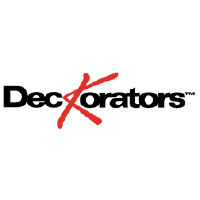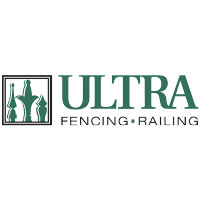The decision between wood and composite decks is one most homeowners in St. Louis face when planning a new outdoor space. As popular options, both deliver a unique mix of style, function, and long-term value. The debate often boils down to classic beauty versus modern durability. Outdoor Living Inc. installs both wood and composite decks, offering solutions tailored to any lifestyle. If you’re comparing natural wood with composite and wondering which fits your needs best, let’s break down the details from initial cost to sustainability, maintenance, and overall performance.
Understanding Wood Decks and Composite Decks
Choosing between traditional wood decking and composite decking means learning the basics of each material first. Wood decking uses natural wood fibers, which is commonly pressure-treated pine, cedar, redwood, and ipe. Each type of wood brings its own unique characteristics, including grain patterns, strength, and color.
Composite decking is engineered from a mix of wood fibers and recycled plastic, making it an eco-friendly option. Many brands, like Trex and TimberTech, manufacture composite decking boards designed for weather resistance and a variety of colors. Both wood and composite deck boards are paired with materials like joists and hidden fasteners to form a strong, stable surface.
Outdoor Living Inc. offers high-quality wood and composite decking options, including the latest in composite deck materials and a variety of natural wood solutions.
1. Natural Wood Decks
Natural wooden decks remain a favorite for homeowners wanting warmth, natural look, and timeless appeal. Real wood grain can be stained or painted to match any home, with customization options for grain, color, and finish. Many enjoy the tactile, rich feel underfoot, which is hard to replicate with synthetic boards.
Common deck woods include:
- Pressure-treated lumber: Hardworking and cost-effective, though it needs regular maintenance.
- Cedar and redwood: More resistant to insect damage and water damage than pine, featuring beautiful grain patterns.
- Ipe: A luxurious hardwood known for durability and natural beauty, but comes with a higher upfront cost.
Natural wood decks can be tailored to almost any design vision. You can learn more about wood deck construction choices and styles here.
2. Composite Decks: Modern Innovation and Durability
Composite decks have changed the game for outdoor living with their maintenance-free promise and long-term value. These boards are made from wood-plastic composite blends, usually combining leftover wood fibers with recycled plastic. This makes them not only eco-friendly, but also more uniform in appearance.
Key benefits of composite decking include:
- Low maintenance: You won’t need to paint, stain, or worry about splintering.
- Color options: The pigments are baked into the material, so composite decking comes in a wider variety of colors and retains its shade for years.
- Durability: Resistant to warping, water damage, insects, and rot, these boards carry longer warranties and demand less upkeep.
Brands like Trex Composite and TimberTech Composite offer some of the top composite options. You’ll find composite decking materials are made for performance and design flexibility. For deeper context, check advice from other homeowners sharing their opinions on modern composite vs. wood decking experiences.
Comparing Performance: Durability, Upkeep, and Longevity
The details matter when it comes to protecting your investment. Both materials have unique strengths and drawbacks related to long-term value, maintenance costs, and real-world performance.
Wood decks deliver natural beauty at a lower initial cost, but require regular maintenance to prevent water damage, decay, and insect infestations. Over time, issues like splintering and warping can result in shorter lifespan and additional costs.
Composite decks, however, skip most of the ongoing labor. You’ll pay a higher initial cost, but enjoy less maintenance, stronger resistance to the elements, and much longer warranties. For many, the low annual upkeep easily justifies the higher upfront expense, especially as composite boards rarely fade or splinter.
For a closer look at material pricing and budgeting your project, Outdoor Living Inc. offers detailed deck cost estimation.
Maintenance and Care Routines
Owning a deck means keeping it in shape. Traditional wood decks need seasonal work:
- Cleaning to clear dirt, mildew, and debris.
- Sealing or staining every few years to maintain color and prevent rot.
- Repairs for splintering boards or loose fasteners.
- Watch out for insect damage and rust on nails or screws.
Composite decks, on the other hand, are nearly maintenance-free:
- Just sweep off dirt and occasionally wash with soap and water.
- No painting or staining required.
Modern fasteners work well and rarely need adjustment.
Lifespan, Warranty, and Long-Term Value
Longevity is key when choosing between wood and composite decking. Regular maintenance can extend the life of pressure-treated wood to 15-20 years, but cheaper softwoods may wear out sooner. Ipe and high-end hardwoods can go further but command a higher price and need the same regular maintenance.
Composite decks, built from recycled materials, generally last upwards of 25-30 years. Major brands like Trex Decking and TimberTech offer impressive warranties (often 25-30 years or even a lifetime), reflecting their confidence in durability.
Eco-conscious homeowners should weigh the environmental impact. While some argue that wood is more eco-friendly in its purest form, many composites now use large amounts of post-consumer recycled plastic and wood fiber, reducing landfill waste and logging.
When weighing steel framing vs wood, remember steel offers extra resistance to rot and insect damage, and pairs especially well with composite decking for a fully maintenance-free, high-quality platform.
Contact Outdoor Living Inc.
Choosing a new deck means balancing aesthetics, maintenance needs, budget, and environmental impact. Wood decks deliver classic style and custom designs rooted in tradition. Composite decking wins with lower maintenance costs, longer lifespan, and strong sustainability benefits through the use of recycled materials.
Outdoor Living Inc. is here to help you weigh your decking options, whether it’s natural wood, modern composite, or even PVC decking. Our expert team can answer your questions, guide your home improvement project, and build the outdoor space that fits your life and style.
Ready to build a deck with high-quality materials, pro design, and pinpoint installation? Contact Outdoor Living Inc. today for a personalized consultation and make your outdoor living dreams a reality.







